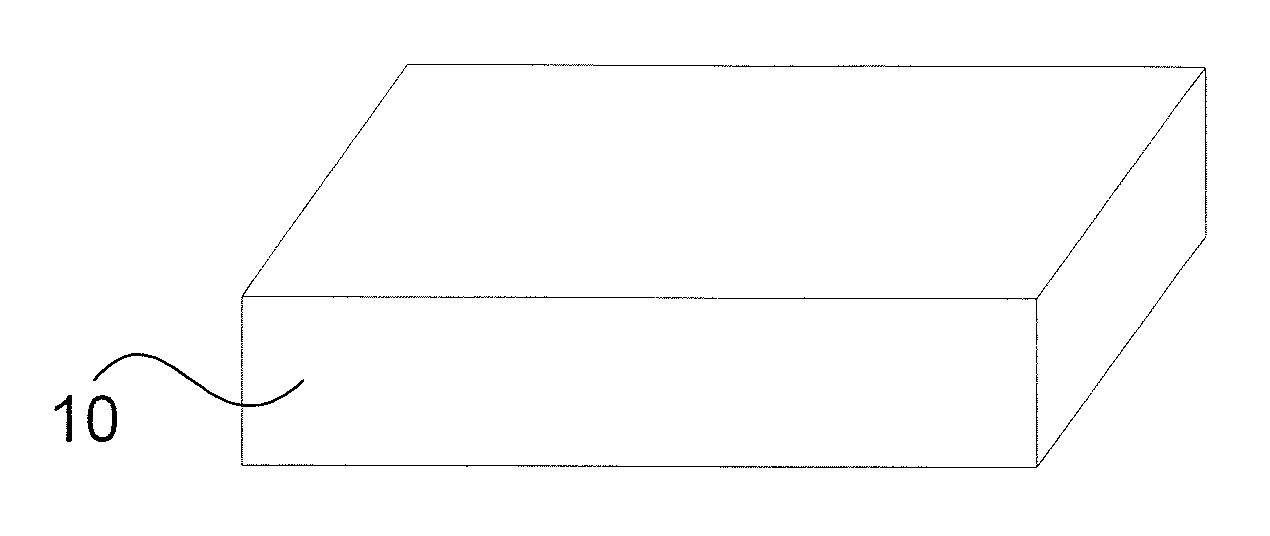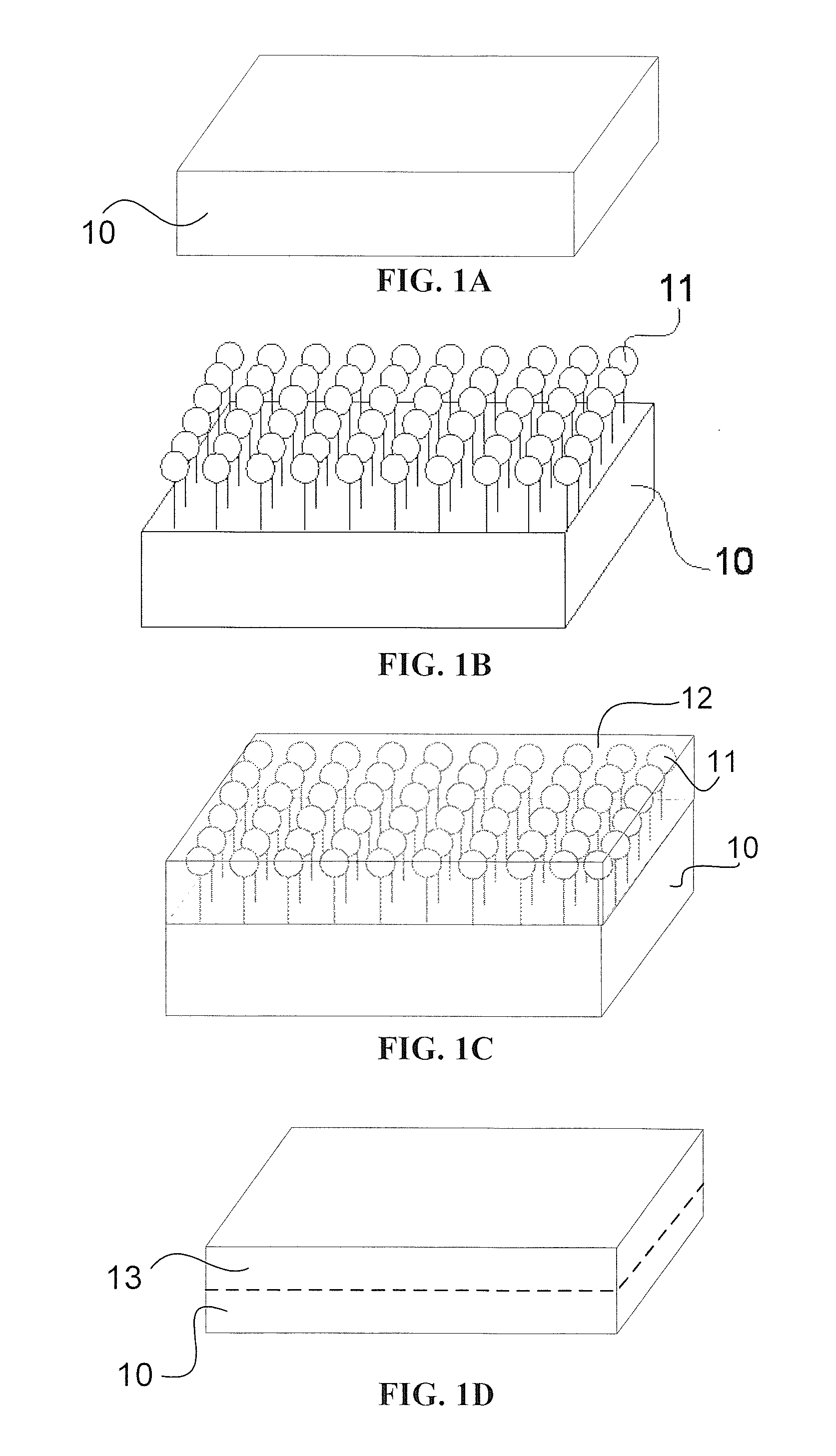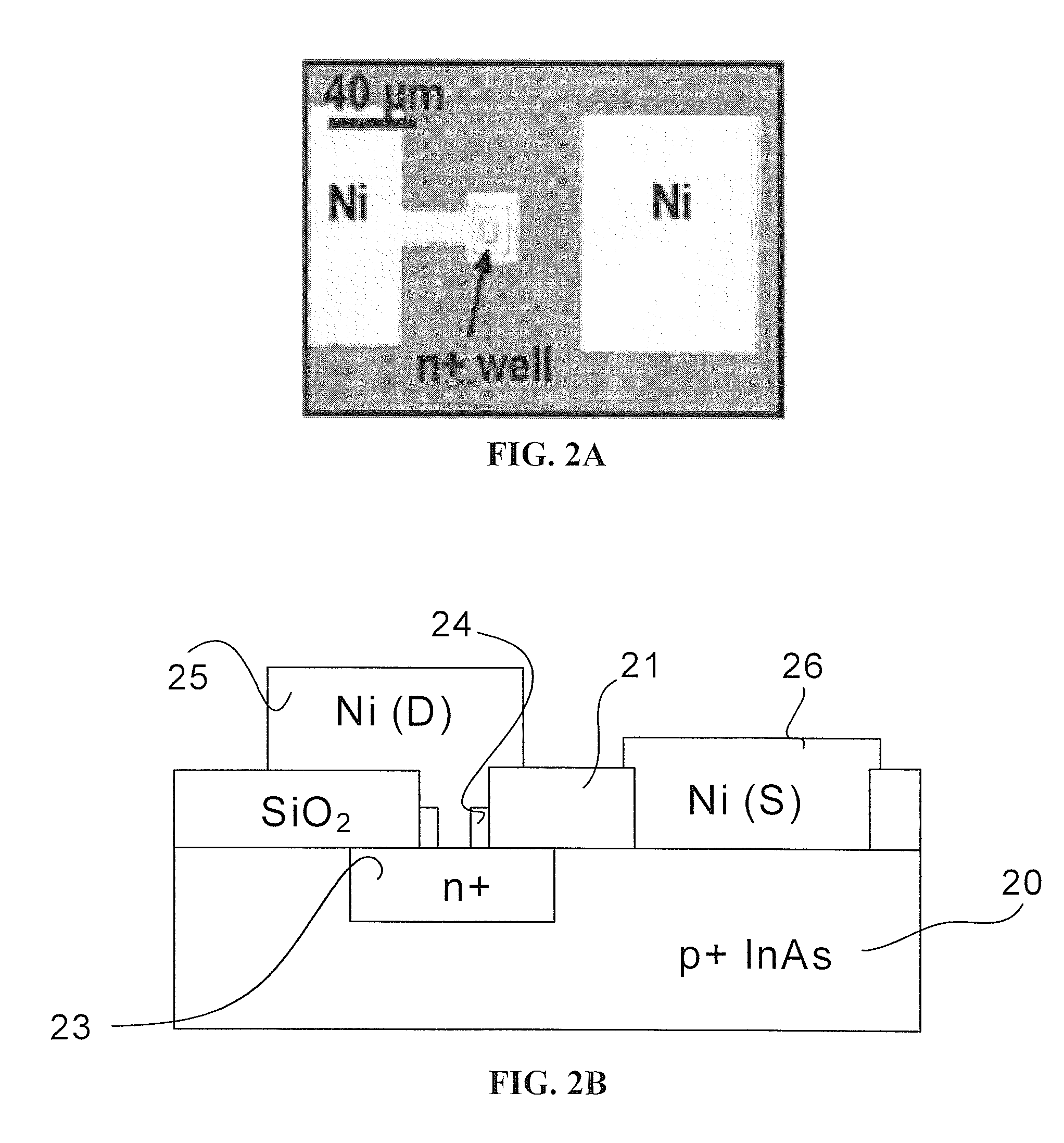Surface and gas phase doping of iii-v semiconductors
a technology of surface and gas phase doping and semiconductors, which is applied in the direction of semiconductor devices, basic electric elements, electrical apparatus, etc., can solve the problems of compound semiconductors, stoichiometry can be altered, and the control of post-growth dopant profiles of iii-v compound semiconductors has not been well addressed
- Summary
- Abstract
- Description
- Claims
- Application Information
AI Technical Summary
Benefits of technology
Problems solved by technology
Method used
Image
Examples
example 1
S-MLD to Form N-Doped InAs
[0053]To dope InAs substrates, InAs (001) substrates can be placed in an ammonium sulfide ((NH4)2SX) solution with excess sulfur. For the experiments, the (NH4)2S, solution is 20% in water, Sigma Aldrich, and the excess sulfur is 0.2 g S per 15 ml of solution. The (NH4)2S, solution is maintained in a water bath at 35° C. The InAs (001) substrates can be initially cleaned with acetone and isopropanol in preparation of the S-MLD process.
[0054]To allow S monolayer formation on the substrate surface, the reaction is performed for 15 min. The InAs substrates are then rinsed in de-ionized water and immediately capped with an oxide. The capping oxide can be electronbeam evaporated silicon oxide (SiO2). Subsequently, thermal annealing is performed to drive in the S atoms to the desired junction depth. For the experiments, the thermal annealing was performed from 350° C. to 450° C. for 300 s.
[0055]FIG. 5 provides a characterization of the S monolayer formation. The ...
example 2
n+ / p+ Tunnel Diodes Through S-MLD of Heavily Zn-Doped InAs Substrates
[0058]The MLD technique of embodiments of the subject invention can be applied to form devices having doped regions. To examine the electrical properties of the S monolayer doped junctions of embodiments of the invention, n+ / p+ tunnel diodes were fabricated on heavily Zn-doped InAs substrates (NB˜6×1018 cm−3).
[0059]FIGS. 2A and 2B show a plan view optical image and a cross-sectional view schematic, respectively, of a representative diode formed by a sulfur monolayer doping (S-MLD) of a p+ InAs substrate.
[0060]For the experiment example, referring to FIGS. 2A and 2B, 125 nm of field oxide 21 was deposited on the heavily Zn-doped InAs substrate 20 by electron-beam evaporation. Photolithography and wet etching using 50:1 hydrofluoric acid was used to define the well regions 23. The sulfur-containing monolayer was then assembled on the exposed InAs well regions following the technique described in Example 1, and a 35 n...
example 3
InAs NW Fabrication
[0067]InAs NWs used for experiment example embodiments were grown using the vapor-liquid-solid (VLS) method by chemical vapor deposition in a two-zone tube furnace using solid InAs powder source. A 0.5 nm thick Ni film was annealed at 800° C. for 10 min to create nanoparticles that serve as catalysts. A substrate temperature of 490° C., source temperature of 720° C., pressure of 5 torr with H2 carrier gas (200 SCCM flow rate) were used. The grown NWs were harvested by sonication in anhydrous ethanol and dropcasted on Si substrates.
PUM
 Login to View More
Login to View More Abstract
Description
Claims
Application Information
 Login to View More
Login to View More - R&D
- Intellectual Property
- Life Sciences
- Materials
- Tech Scout
- Unparalleled Data Quality
- Higher Quality Content
- 60% Fewer Hallucinations
Browse by: Latest US Patents, China's latest patents, Technical Efficacy Thesaurus, Application Domain, Technology Topic, Popular Technical Reports.
© 2025 PatSnap. All rights reserved.Legal|Privacy policy|Modern Slavery Act Transparency Statement|Sitemap|About US| Contact US: help@patsnap.com



